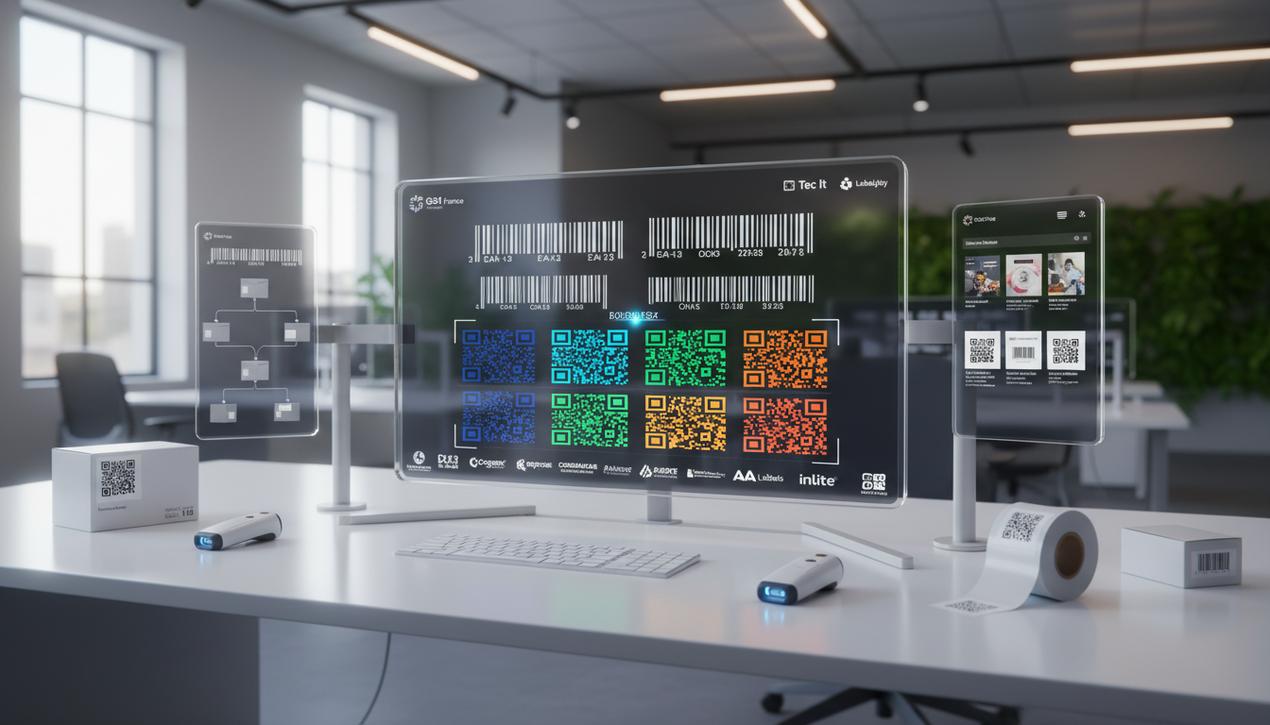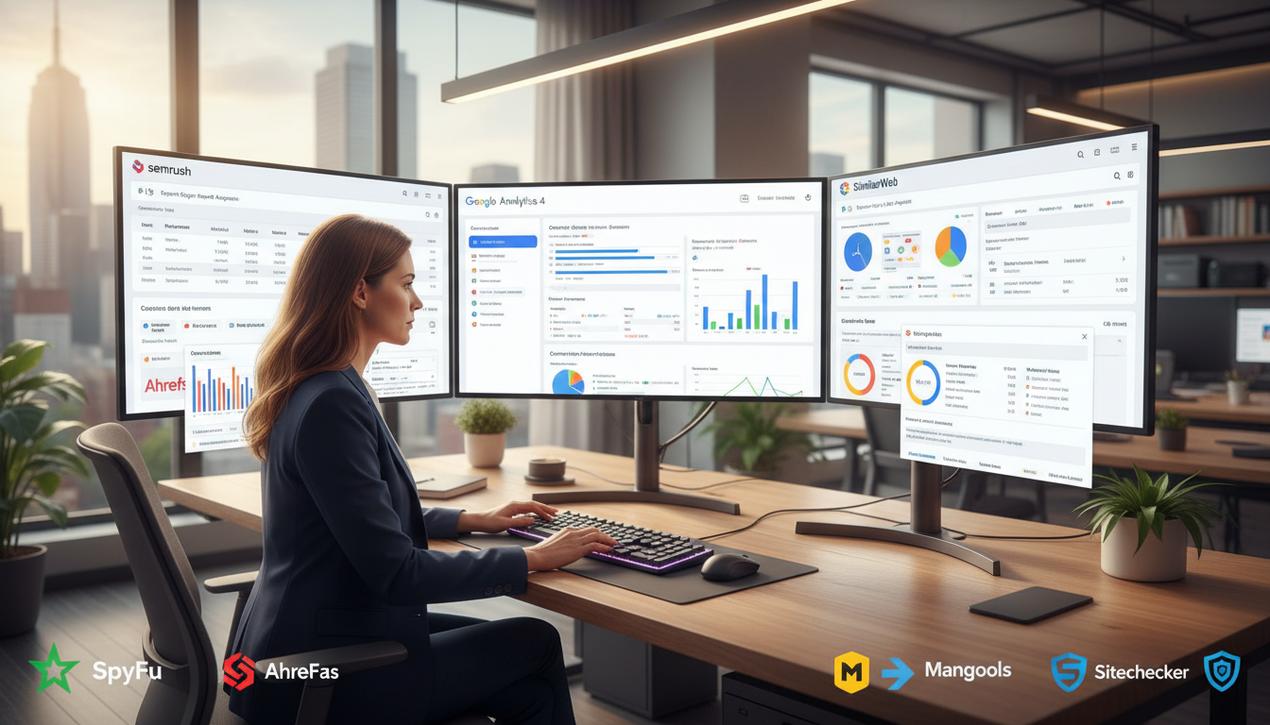Top 12 Free Barcode Generators for Your Business in 2025


Inventory management and product traceability are central to any commercial enterprise. In today’s digital ecosystem, the humble barcode remains an indispensable tool. Far from being obsolete, barcode technology is continuously evolving, with the global market for scanners and related technologies projected to reach nearly $10 billion by the end of 2025. This significant growth highlights its critical importance, especially in the e-commerce sector, where logistical speed and accuracy are paramount to success. To meet this demand, numerous online tools now allow businesses to create barcodes for free, offering entrepreneurs an accessible way to professionalize their operations. Whether for identifying a product, tracking a shipment, or streamlining the checkout process, generating reliable barcodes is a crucial step. This guide explores the best free platforms available, analyzing their features and the types of codes they offer, from traditional EAN and UPC to modern QR Codes.
The Best All-Around Free Barcode Generators
To launch or optimize a commercial activity, having access to high-performing tools is essential. Here is a selection of 12 online barcode generators that stand out for being free, user-friendly, and feature-rich.
1. GS1: The Official Standard
GS1 is the global organization that standardizes barcodes, making its online tool a benchmark for compliance and reliability. It primarily focuses on generating EAN-13 codes, the European standard for consumer products, and UPC codes for North America. The interface is clean and straightforward: you enter your number sequence and instantly download a high-quality image in PNG, JPG, or EPS format, ready for printing.
2. Tec It Barcode Generator: Ultimate Versatility
This platform is one of the most comprehensive on the market. Tec It supports over one hundred barcode formats, including linear (1D) types like Code 128 and two-dimensional (2D) types like QR Codes and Data Matrix. It covers highly specific needs, from international postal codes to formats used in the healthcare industry (Pharmacode). Its ability to generate entire sheets of labels is a major advantage for mass production.
3. Barcode Generator: Advanced Customization
The strength of this tool lies in its deep customization options. You can choose from nearly 190 symbologies and also adjust precise technical parameters like dimensions, resolution (DPI), font size, and more. It’s the ideal solution for specific printing requirements, with export options including JPG, PDF, and even Excel.
4. Aspose Free Barcode Creator: User-Friendly and Efficient
With its clear drop-down menus, Aspose makes barcode creation highly accessible. It handles over 60 formats, covering standards for retail, logistics (parcel codes), and publishing (ISBN). The ability to choose the output image format from a wide selection (PNG, JPG, SVG, etc.) is a significant benefit for adapting to different media.
5. Cognex Free Barcode Generator: Simple and Effective
Cognex offers a quick solution for creating the most common formats, such as EAN, UPC, and QR Codes. Its intuitive interface lets you generate a code in seconds. It also provides valuable marketing features, like creating QR Codes for virtual business cards or Wi-Fi access, a rapidly growing trend.
6. LabelJoly: Ideal for Custom Labels
Supporting over 25 code types, LabelJoly stands out with its library of 11,000 pre-designed label templates. This tool is perfect for those who want to not only generate a code but also integrate it directly onto a visual layout, often enhanced by using free stock photo sites. It allows you to download your creations in PNG and PDF formats, simplifying the printing and management of your product labels.
Specialized and Niche Barcode Solutions
Beyond the general-purpose platforms, some tools cater to more targeted needs, whether it’s extreme simplicity, mobile functionality, or developer-focused features.
7. Online Barcode Generator: For Developers
This site provides not only a manual generator but also a free API that allows developers to integrate barcode creation directly into their own applications or websites. For those looking for a different approach, it’s possible to build a free Android app using no-code tools. It supports numerous formats and offers valuable technical flexibility for custom projects.
8. QR Code Tiger: The 2D Specialist
While its name highlights QR Codes, this powerful tool also handles the creation of 1D barcodes. Its real strength lies in its advanced QR Code features: scan tracking, design customization (logos, colors), and the creation of dynamic codes that can be edited after printing. It’s a comprehensive marketing solution.
9. AA Labels: Focus on Product Labeling
Specializing in labels, AA Labels offers an efficient generator for 14 different barcode formats. It is particularly well-suited for preparing print jobs on adhesive label sheets. The tool also includes a simple QR Code creation function for URLs or contact information.
10. Barcode Scanners & Generators (Android/iOS): Go Mobile
Mobile usage is a dominant trend. Numerous apps on Android and iOS allow you to generate barcodes directly from a smartphone. These applications often include a scanner, turning your phone into a complete logistics tool, much like the top document scanner apps, for small businesses or mobile entrepreneurs. With QR code payments expected to grow by over 16% annually through 2028, these apps are more relevant than ever.
11. Inlite Online Barcode Reader & Generator: A 2-in-1 Tool
This platform offers a valuable dual function: not only does it generate barcodes in the most common formats, but it also allows you to upload an image to read and decode an existing barcode. It’s an excellent verification and quality control tool.
12. Codebarre.be: Maximum Simplicity
For those who need to work quickly and without frills, Codebarre.be is perfect. It focuses on two essential formats: EAN-13 for products and ISBN for books. The interface is minimalist: enter the numbers, generate, and save. It’s the ideal tool for on-the-fly barcode creation.
Understanding Barcode Utility and Types
A barcode is much more than a series of black and white lines; it’s a digital identity card for a product. It contains essential information that, once scanned, allows for unique and rapid identification. This technology is fundamental for several key business functions.
The Core Functions of a Barcode
- Inventory Management: It enables real-time tracking of stock levels, automating inventory counts and reducing human error by over 70% in some cases.
- Logistics and Traceability: From the warehouse to the final customer, barcodes ensure every step of the supply chain is monitored.
- Point-of-Sale Efficiency: Checkout processes are significantly faster, improving the customer experience.
- Anti-Counterfeiting: Unique and secure codes help guarantee product authenticity, a crucial feature in industries like pharmaceuticals and luxury goods.
The Main Families of Barcodes
There are two primary categories of barcodes, each with its own specific characteristics and use cases.
1D (Linear) Barcodes: These are the most recognizable types, composed of vertical bars. They store a limited amount of text-based information, typically an identification number.
- EAN (European Article Numbering): The standard in Europe, it consists of 13 digits and is ubiquitous on retail products.
- UPC (Universal Product Code): The North American equivalent of the EAN, with 12 digits.
- Code 128 and Code 39: Widely used in logistics and manufacturing, they can encode both numbers and letters.
2D (Two-Dimensional) Barcodes: These can store significantly more information (URLs, contact details, product info) in a compact, often square, format. The 2D barcode market is rapidly expanding, driven by its superior data capacity.
- QR Code (Quick Response Code): The most popular 2D code, readable by any smartphone. QR Code adoption for marketing has surged, with recent studies showing that over 80% of consumers have scanned a QR code at least once.
- Data Matrix: A compact and robust code favored in industries like aerospace and electronics for marking small components.
- Aztec Code: Often used in the transportation sector, particularly on airline and train tickets.
How to Choose the Right Generator and Format
Selecting a barcode generator ultimately depends on your specific needs. First, it’s crucial to identify the right barcode type for your industry and application. If you’re selling retail products in Europe, the EAN-13 format is non-negotiable. For internal logistics, a Code 128 will offer more flexibility. To engage with customers and direct them to your website, the QR Code is the undisputed marketing tool of choice. Once you’ve defined the format, evaluate the generator’s features. Do you need advanced customization, like setting the print resolution? Is the ability to generate complete labels a priority? Do you need to create codes in bulk or just occasionally? For simple and quick use, a platform like Codebarre.be will suffice. For more complex needs involving marketing and analytics, a tool like QR Code Tiger is more appropriate. Most free platforms amply cover the needs of small and medium-sized businesses, providing an effective and cost-free way to structure their product management.
In short, creating barcodes has become a simple and accessible task thanks to a multitude of free and powerful online tools. From the official compliance of GS1 to the versatility of Tec It, every entrepreneur can find the right solution to optimize their logistics, improve inventory management, and professionalize their business. The shift towards 2D codes, especially QR Codes, is also opening up exciting new marketing opportunities by directly linking physical products to the digital world. Knowing how to navigate these options and choose the right format is an essential skill for any business looking to thrive in the 2025 commercial landscape.




